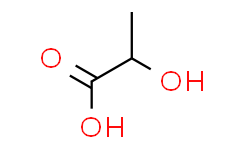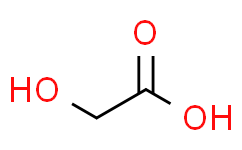Title:The inhibitory effect of glycolic acid and lactic acid on melanin synthesis in melanoma cells
标题:乳酸和乙醇酸对黑色素瘤细胞合成黑色素的抑制作用
Authors:Usuki A., Ohashi A., Sato H., et al.
作者:Usuki A., Ohashi A., Sato H. 等
Journal:Experimental Dermatology, 2003, Volume 12, Supplement 2, Pages 43-50
期刊:《实验皮肤病学》,2003年,第12卷,增刊2,第43-50页
Summary:
This study examines the effects of glycolic acid and lactic acid on melanin synthesis in melanoma cells. Melanin synthesis, regulated by the enzyme tyrosinase, plays a critical role in skin pigmentation. Overproduction of melanin can lead to hyperpigmentation disorders.
摘要:
本研究探讨了糖醇酸和乳酸对黑素瘤细胞黑素合成的影响。黑素合成由酪氨酸酶调节,酪氨酸酶在皮肤色素形成中起着至关重要的作用。黑素过度生成可能导致色素沉着障碍。
Key Findings:
1.Glycolic Acid (GA):
CAS Number: 79-14-1
Inhibits melanin synthesis by interfering with the activity of tyrosinase.
The study showed that GA significantly reduced melanin content in treated melanoma cells compared to untreated controls.
2.Lactic Acid (LA):
CAS Number: 50-21-5
Also demonstrated an inhibitory effect on melanin synthesis.
LA's effect was slightly less potent than GA but still significant.
1.Mechanism:
Both acids reduce melanin production by inhibiting tyrosinase activity, which is essential for melanin synthesis.
The inhibitory effect was observed to be dose-dependent, meaning higher concentrations of the acids resulted in greater inhibition.
2.Applications:
These findings suggest potential use of GA and LA in treating hyperpigmentation disorders, such as melasma and age spots.
The study provides a basis for developing skin-whitening agents that can be used in dermatological treatments.
主要发现:
1.糖醇酸(GA):
CAS号: 79-14-1
通过干扰酪氨酸酶的活性抑制黑素合成。
研究表明,与未处理的对照组相比,GA显著降低了处理过的黑素瘤细胞中的黑素含量。
2.乳酸(LA):
CAS号: 50-21-5
同样显示出对黑素合成的抑制作用。
LA的效果略低于GA,但仍然显著。
机制:
这两种酸通过抑制黑素合成所必需的酪氨酸酶活性来减少黑素生成。
研究观察到抑制效果与剂量相关,即较高浓度的酸导致更强的抑制作用。
应用:
这些发现表明GA和LA在治疗色素沉着障碍(如黄褐斑和老年斑)方面的潜在用途。
(该研究为开发可用于皮肤美白剂的皮肤科治疗提供了基础。






 沪公网安备31011402010657号
沪公网安备31011402010657号